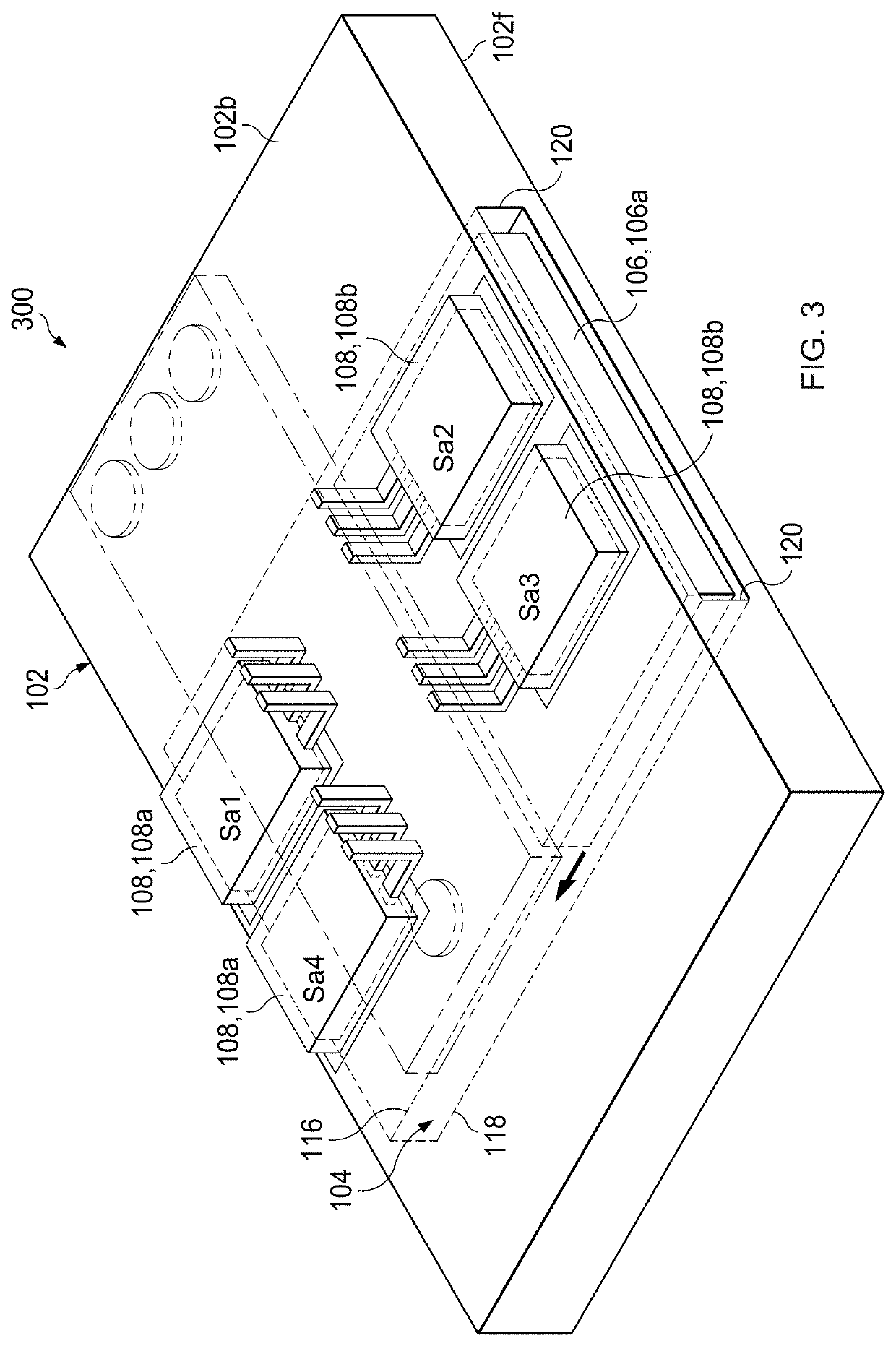Active thermal management system for electronic devices and method of achieving device-to-device isothermalization
a technology of active thermal management and electronic devices, applied in the direction of cooling/ventilation/heating modifications, semiconductor/solid-state device details, and modifications by conduction heat transfer, can solve the problems of varying hot spots, devices operating with variable losses, and electrical thermal obstacles to realize the full potential of wide-band gap devices, and achieve the effect of minimizing the temperature differential (t)
- Summary
- Abstract
- Description
- Claims
- Application Information
AI Technical Summary
Benefits of technology
Problems solved by technology
Method used
Image
Examples
example 1
Switchable Heat Spreader with Liquid Metal Droplet
[0042]In a first example, two GaN devices are integrated with a liquid metal-based heat spreader as described below. By precisely controlling the location of the liquid metal droplet in the internal channel, variable thermal pathways to the front side of the heat spreader can be obtained and—at some optimal set point depending on the GaN device temperature mismatch—temperature equilibration. The length of the liquid metal droplet employed for this example is longer than the length of the two GaN devices, which are closely spaced apart, as shown in the schematic of FIG. 2. Thus, the liquid metal droplet may be positioned adjacent to both GaN devices simultaneously.
[0043]To fabricate the heat spreader of this example, two top-cooled EPC 2034 GaN devices (Efficient Power Conversion Corporation), each having dimensions of 2.6 mm×4.6 mm×0.7 mm, are soldered onto a single printed circuit board (PCB) having dimensions of 40 mm×40 mm×1.6 mm....
example 2
Switchable Heat Spreader with Metal Slider
[0048]Finite element simulations using a solid-phase thermally conductive body (“slider”) movably positioned in the internal channel are used to predict the temperature distribution within the heat spreader and the effect of slider position on temperature and heat flux.
[0049]Referring to FIG. 3, the switchable heat spreader of this example comprises alumina with a movable copper slider in the internal channel. The heat spreader has dimensions of 107 mm×153 mm×10 mm. The internal channel has dimensions of 107 mm×80 mm×8 mm. The slider moving in the channel has a transverse cross-sectional area of 80 mm×8 mm. The slider position and size can be modified as inputs to the simulations. Electronic devices are introduced to the model as concentrated heat sources labeled Sa1, Sa2, Sa3, Sa4, where Sa1 and Sa4 are disposed in opposition to Sa2 and Sa3, respectively, on the heat spreader, adjacent to the internal channel. The system layout can be creat...
PUM
 Login to View More
Login to View More Abstract
Description
Claims
Application Information
 Login to View More
Login to View More - Generate Ideas
- Intellectual Property
- Life Sciences
- Materials
- Tech Scout
- Unparalleled Data Quality
- Higher Quality Content
- 60% Fewer Hallucinations
Browse by: Latest US Patents, China's latest patents, Technical Efficacy Thesaurus, Application Domain, Technology Topic, Popular Technical Reports.
© 2025 PatSnap. All rights reserved.Legal|Privacy policy|Modern Slavery Act Transparency Statement|Sitemap|About US| Contact US: help@patsnap.com



